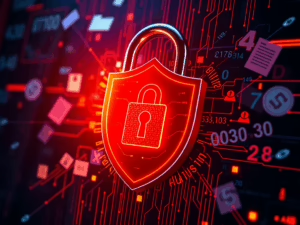
Anthropic CEO claims AI models hallucinate less than humans
During Anthropic’s developer event, CEO Dario Amodei asserted that AI models hallucinate less often than humans, despite unpredictability in their manifestations. He remains optimistic about achieving Artificial General Intelligence (AGI) by 2026. While techniques to reduce hallucinations exist, challenges persist, as highlighted by errors from the AI chatbot Claude in legal contexts.
Read More
Verizon Wants to Lock Phones Longer Like AT&T and T-Mobile
Verizon seeks to extend the unlocking period for its smartphones from 60 days to mitigate fraud and device trafficking, claiming the current rule harms consumers and competition. The proposal intends to align their policies with other carriers. The potential shift could be influenced by the FCC’s current deregulation focus.
Read More
Unveiling Dark Oxygen: A New Frontier in Earth’s Oxygen Production
Dark oxygen refers to molecular oxygen production in the absence of light, challenging the belief that photosynthesis is its sole source. Generated through abiotic and biotic processes, particularly by polymetallic nodules in the Pacific’s Clarion-Clipperton Zone, this discovery impacts biogeochemical cycles and raises concerns about deep-sea mining’s ecological effects.
Read More
Apple Smart Glasses: Everything We Know So Far
# Apple Smart Glasses: The Latest Updates and Rumors Ever since Google unveiled its lightweight smart glasses featuring deep Gemini integration and an optional in-lens display, the tech world has been buzzing with excitement. And it’s not just Google – Apple is also rumored to be working on a similar project! Let’s take a closer […]
Read More
Jony Ive to lead OpenAI’s design work following $6.5B acquisition of his company
Jony Ive, the renowned designer from Apple, has joined OpenAI to lead its design efforts following OpenAI’s acquisition of his company, io, for $6.5 billion. This partnership aims to create AI-powered consumer devices, positioning OpenAI to compete with Apple. Ive retains his firm, LoveFrom, while development of new technologies is set for 2026.
Read More
OpenAI may be developing its own social platform, but who’s it for?
OpenAI is reportedly developing a new social network, inspired by X, which focuses on real-time data to enhance AI model training. Currently in its early stages, the internal prototype integrates ChatGPT’s image generation alongside a social feed, aiming to provide OpenAI a competitive advantage in the AI landscape.
Read More
Google Shows Off Android XR Smart Glasses With In-Lens Display
Google has launched its Android XR smart glasses, featuring an optional in-lens display for real-time information and deep Gemini integration. Designed in collaboration with prominent eyewear brands, these glasses allow for seamless interaction with smartphones, facilitating tasks like messaging and real-time translations. Get ready for a stylish technological future!
Read More
macOS 16: Everything We Know So Far
macOS 16 is set to be unveiled at WWDC on June 9, promising a major redesign and enhanced features. Anticipated enhancements include a streamlined interface, sync capabilities for Wi-Fi logins across devices, AI battery management, and improved accessibility options. Potential names may reflect California locations, continuing Apple’s naming tradition.
Read More
Coinbase says its data breach affects at least 69,000 customers
Coinbase has confirmed a data breach affecting at least 69,461 customers, where sensitive information was stolen over several months. The breach, which began on December 26, 2024, involved hackers bribing customer support staff for unauthorized access. They demanded a $20 million ransom, which Coinbase refused to pay.
Read More
Fortnite returns to the US App Store after a five-year gap
# Fortnite Makes a Triumphant Return to the US App Store After a Five-Year Absence After a long legal battle with Apple, the popular battle royale game *Fortnite* has finally returned to the U.S. App Store. Here’s what you need to know about this exciting development in the world of gaming. ## The Long-Awaited Return […]
Read More